After the neck ring was finished, I decided to start cranking out cobalt glass beads in the studio. Cobalt glass is beautiful and is ubiquitous in the ancient world. It seems that every culture both had, and coveted more of, this type of glass. (And fortunately, mundanely it is one of the least expensive colors of soft glass that exists.)
While looking though finds from graves near the salt mines of Dürrnberg, I noticed a couple of necklaces comprised of only cobalt glass and amber and I found them very striking. They appear at other sites as well, including some from Switzerland. Realistically, both bead types are so prevalent that I have to imagine this type of jewelry is not at all uncommon (and both plain amber and plain cobalt necklaces show in in graves as well). I decided that I would craft one based loosely on grave 193#2 from the Römersteig grave group.
While looking though finds from graves near the salt mines of Dürrnberg, I noticed a couple of necklaces comprised of only cobalt glass and amber and I found them very striking. They appear at other sites as well, including some from Switzerland. Realistically, both bead types are so prevalent that I have to imagine this type of jewelry is not at all uncommon (and both plain amber and plain cobalt necklaces show in in graves as well). I decided that I would craft one based loosely on grave 193#2 from the Römersteig grave group.
| | |
I started crafting my cobalt glass beads and also started researching vendors for the amber. I ended up going with Baltic Amber Masters, from Estonia. The beads in his shop were perfect for my project, being not perfectly spherical in shape but still catching the light beautifully. I contacted him about a custom order (as the necklaces he had had more beads than I currently needed for this project) and he showed me several options from stock and even tossed in a few larger beads as a gift. I absolutely recommend this vendor.
In the extant piece the cobalt glass beads ranged from .95-1.1 cm and the amber was .65-1 cm. The amber I was able to order ranged up to 1.3 cm, and I made my cobalt beads in a range that compliments that size. My clasp is an S-hook and ring, even though no clasp was found in the grave to my knowledge.
In the extant piece the cobalt glass beads ranged from .95-1.1 cm and the amber was .65-1 cm. The amber I was able to order ranged up to 1.3 cm, and I made my cobalt beads in a range that compliments that size. My clasp is an S-hook and ring, even though no clasp was found in the grave to my knowledge.
The necklace below is not Celtic but rather is for a friend who has some early Greek clothing for Pennsic. The beads, including SO MUCH COBALT GLASS, are all of types from Greece or Egypt from about 600-300BCE. Several of them also show up in Celtic graves from the period as well.
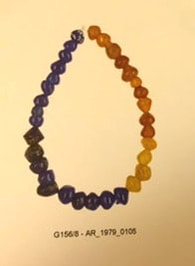
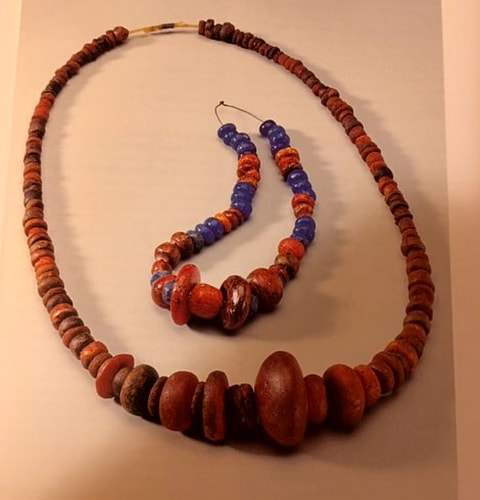
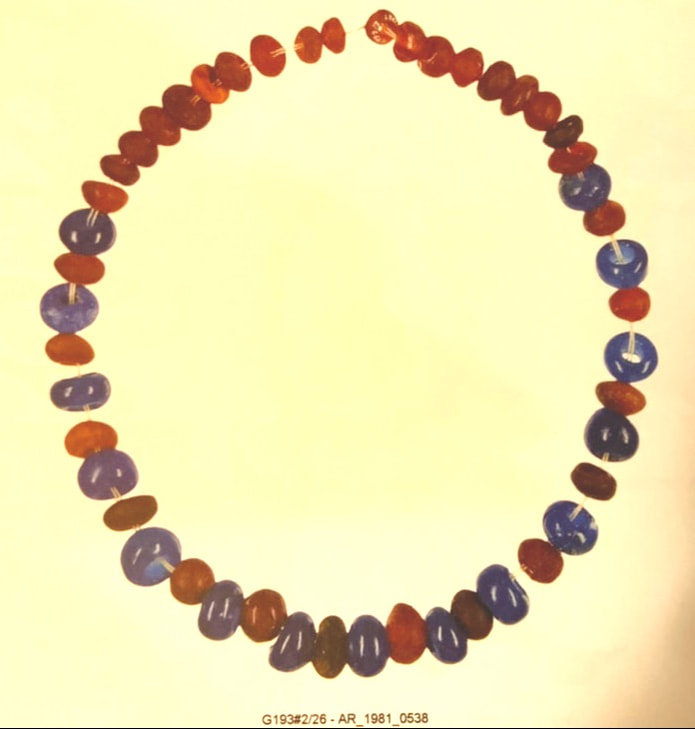
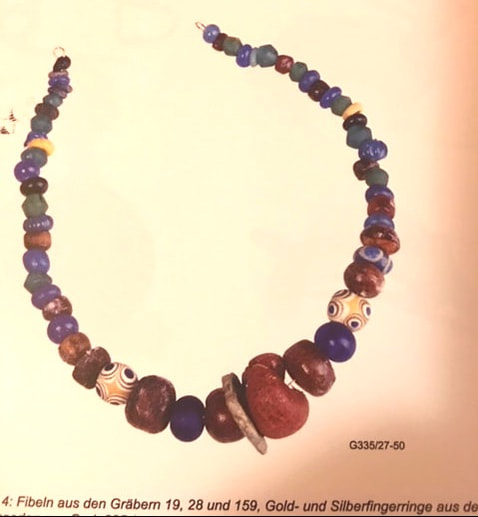
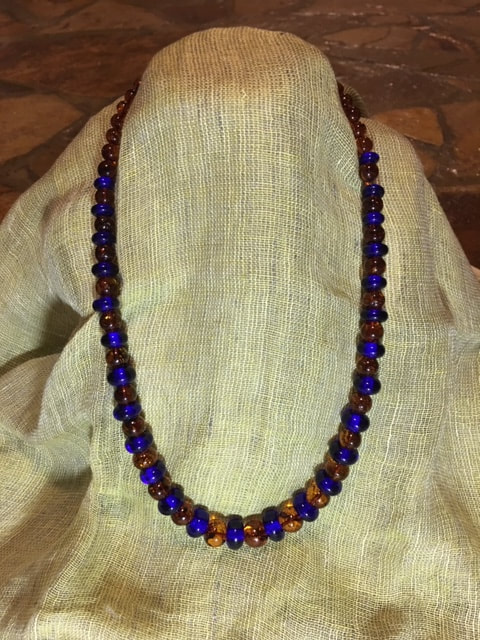
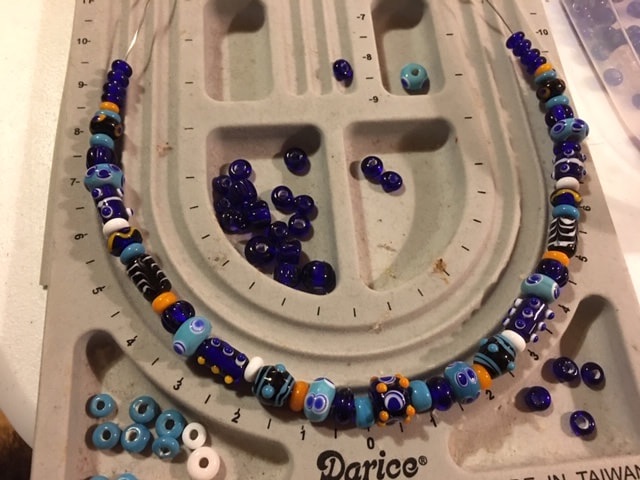
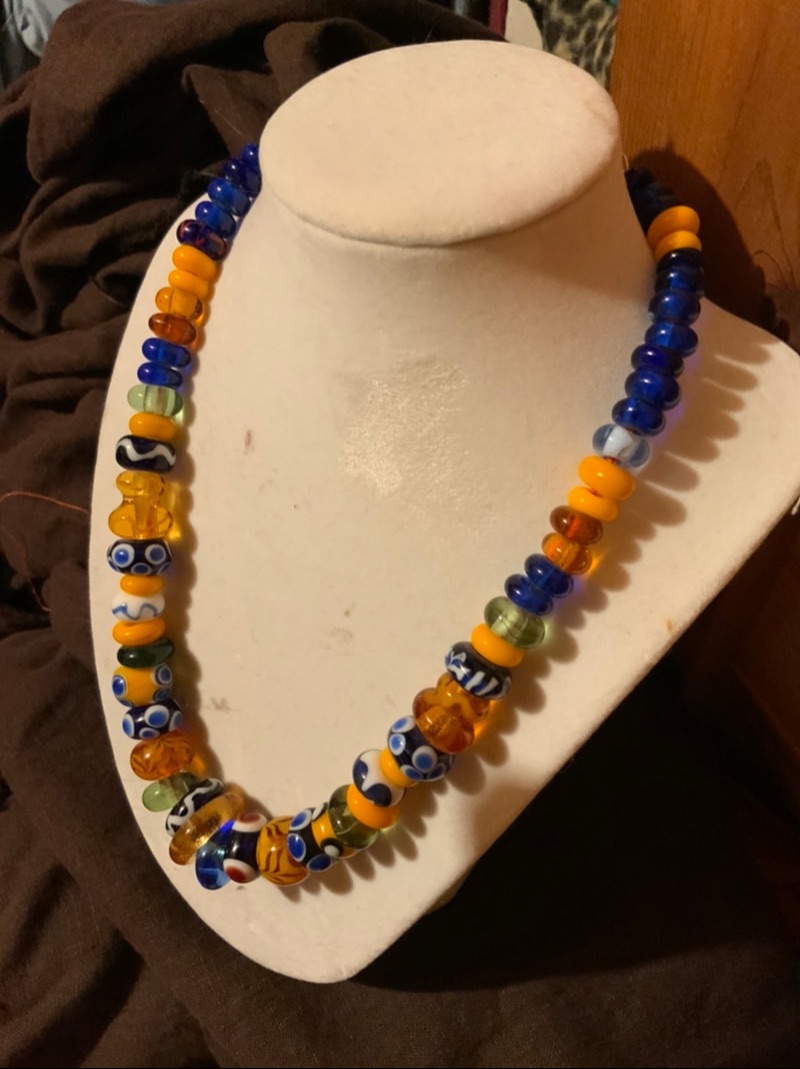
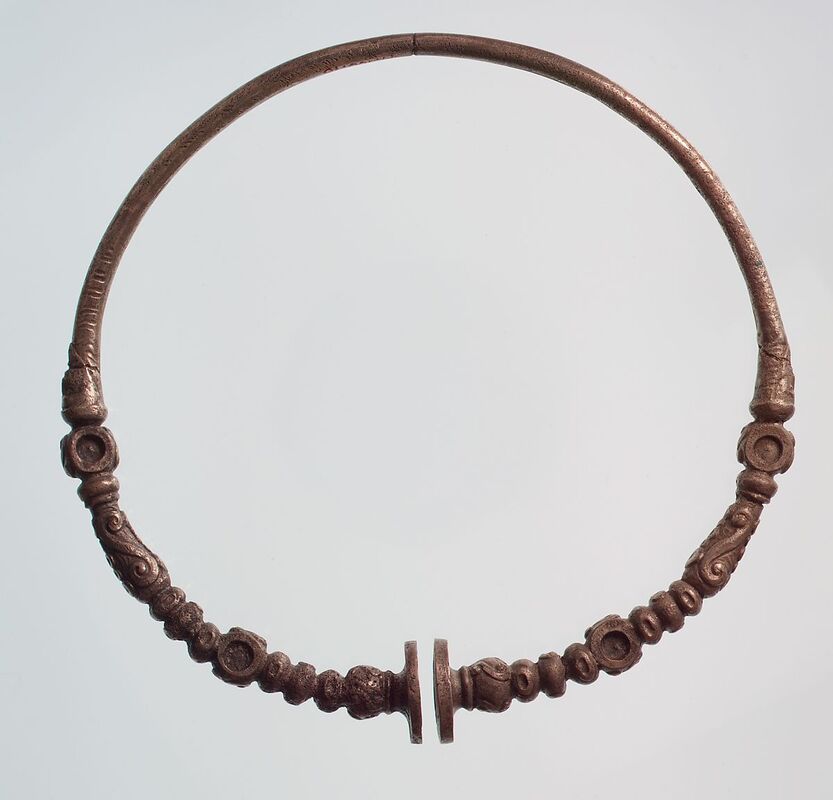
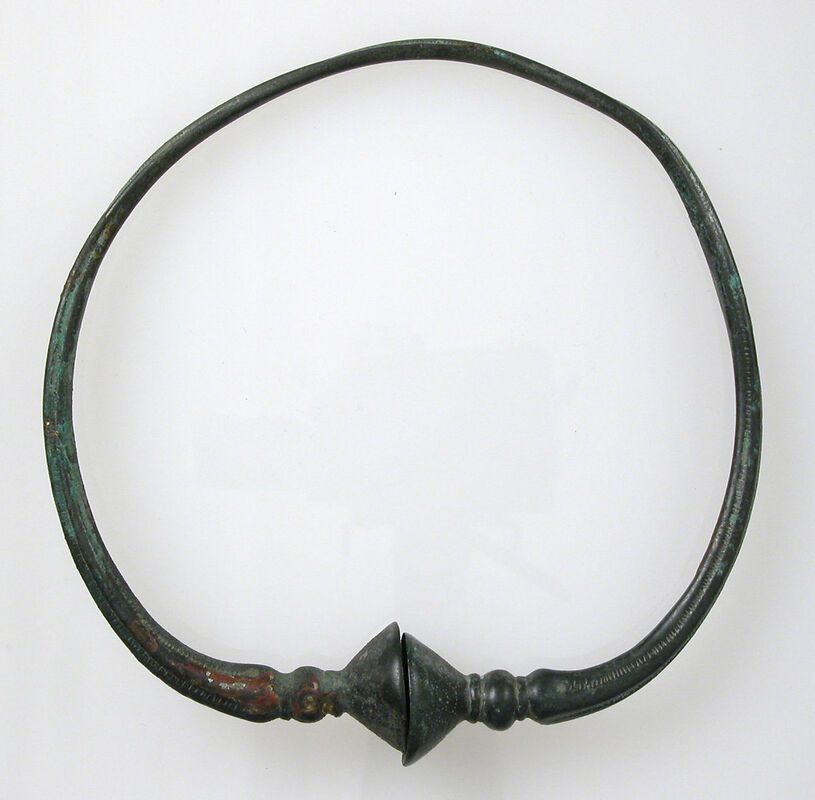
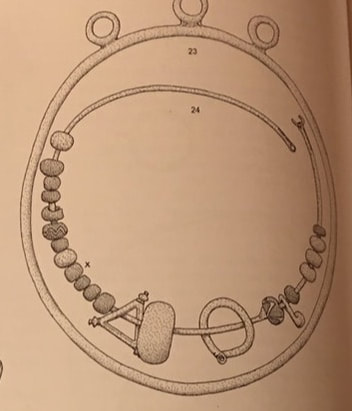
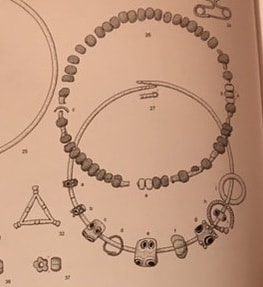
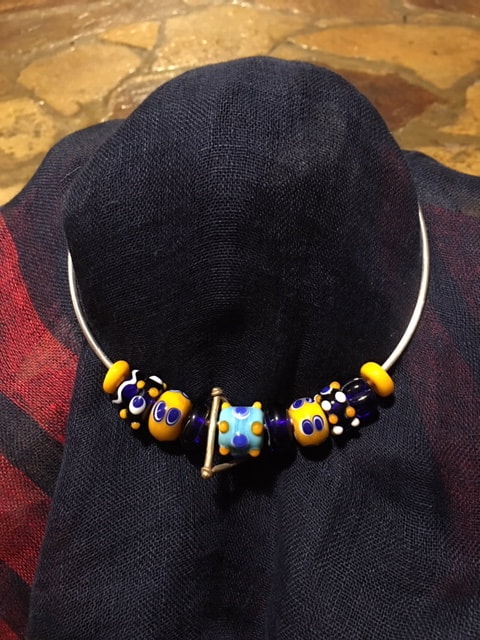
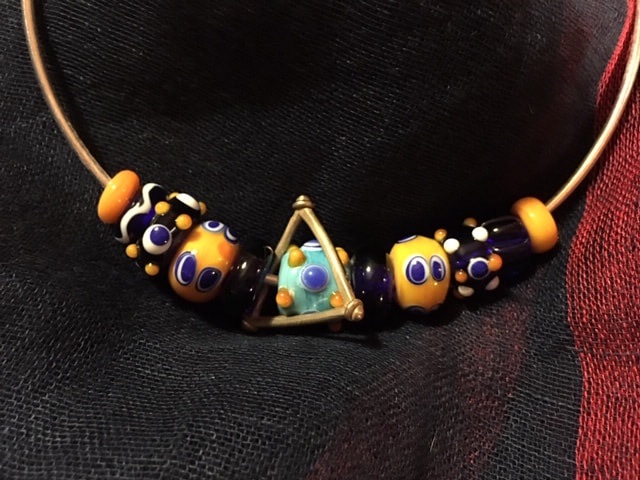
 RSS Feed
RSS Feed